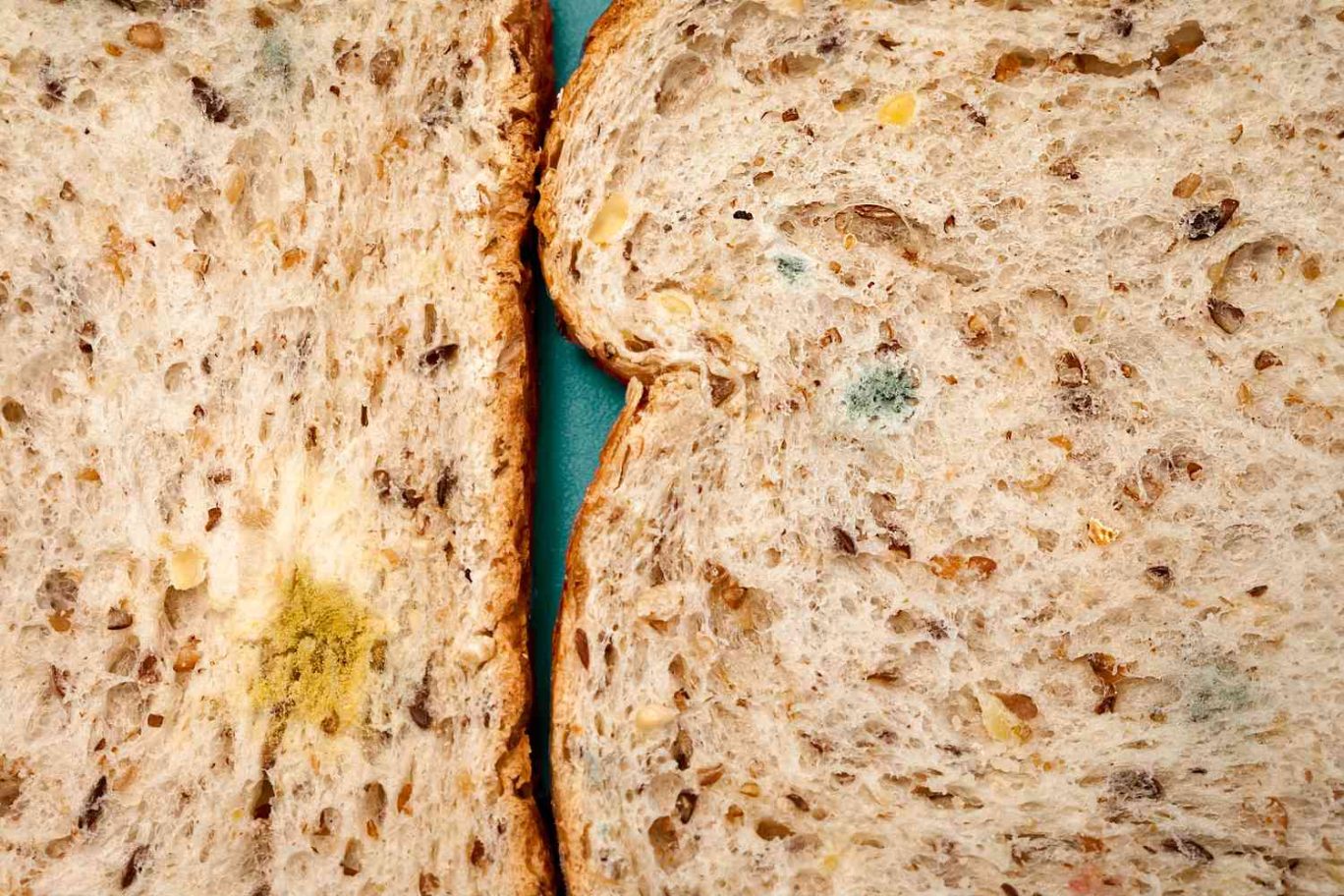eska-en
What is Mold in Bread? How Mold Occurs
What is Mold in Bread? How Does Mold Form?
Mold is the most common disease in bread. Most of the ingredients from which bakery products are made and the end product itself are highly susceptible to mold infections. In addition, places with suitable humidity and temperature such as fermentation rooms, proofing cabinets, shelves where bread is cooled are also suitable for the growth and reproduction of mold fungi (Elgün and Ertugay, 1992).
Freshly baked bread does not contain live mold spores. This is because the baking temperature is sufficient to kill mold spores that are transmitted to the dough in various ways during production. Due to the presence of microbial spores almost everywhere in the bakery, hot bread removed from the oven is exposed to infection as the surface cools (Pyler, 1998).
The infection rate is high beyond estimation. In a study, it was found that approximately 700 mold spores fall on every 0.1 m² of the oven floor in the oven atmosphere every hour. In a cooling environment, this number is 420. In another study, the number of mold colonies in petri dishes in the room where a moldy loaf of bread was placed increased from 6 to over 100 in 1 min.
On the other hand, the spore rate in 1m³ of air was found to be 1000-2500 on average in small-scale bread sales places and bread production places where large-scale production is carried out. While this number was between 530-730 in the rooms where fresh bread was kept, the number of molds in 1m³ of the rooms where stale bread was kept was between 125,000 and 175,000.
As it is understood from this, it has been determined that even a single slice of moldy bread can cause contamination in the entire oven and that there is a direct proportion between the spread of microbial infection and the amount of dust in the air (James, 1992; Pyler, 1998). Mold spores in flour can survive in poorly baked bread and cause the bread to spoil within 1-2 days (Ünver and Sacır, 1982).
Since the baking process reaches a temperature that can kill mold spores on the surface and inside the bread, mold in bread is caused by contamination from the air while the bread cools after it comes out of the oven, from the knife and slicing machines while slicing, from hand contact, and from the materials used in packaging.
Mold growth starts on the surface and if there is enough time and environment, it progresses through small pores into the bread. (Çelik and Çelik, 1995) The main molds that cause spoilage in bread, “white bread mold” Rhizopus (R. Nigricans, R. Stolonifer), which also has white cottony mycelium and black punctate spores,
Green sporting Penicillium expansumAsperqillus (A. niger, A. fumigatus), green or pinkish brown in color with black conidiophores,
Monilia stophila and some species of the genera Mucor and Geotrichum, which are seen in pinkish red color because they have pink conidia that give yellow pigment to bread (Elgün and Ertugay, 1992; James, 1992).
Molds grow in contaminated bread within 3 days (Elgün and Ertugay, 1992; Pomeranz, 1997). In addition, care should be taken not to affect the aroma, which is a red bread mold, and not to reduce the technological value of bread.
To prevent mold growth, Na and Ca propionate are usually added at a rate of 0.1% of the flour weight (Özkaya and Özkaya, 1992).
Rope disease Various bacteria and mold spores are present in the natural microflora of flours. These do not cause any problems during baking and storage of bread. While the vegetative form of bacteria dies at oven temperature, spore-forming bacteria may remain alive (Kent, 1983).
Rope disease in bread is caused by the survival of heat-resistant spores of Bacillus suptilis (mesentericus) during baking, especially in summer. During baking, the temperature inside the bread does not exceed 100°C. This temperature is not sufficient to kill Bacillus suptilis spores.
After the bread has cooled, the viable spores transform into vegetative forms and develop in the highly favorable environment of fresh bread. Disease-causing spores begin to develop at 32°C and multiply optimally at around 40°C. E acidity deficiency in the blood promotes the disease. This is because the growth of Bacillus suptilus is inhibited when the pH is around neutral, while a decrease in pH towards 5 inhibits the growth. As a result of the activity of the bacteria, they break down the starch and proteins in the bread with the proteolytic and amylolytic enzymes they secrete. As a result of spoilage, the bread first gains an odor resembling the smell of spoiled melon. In the meantime, yellowish and brown spots form in the bread, and over time, these Neurospora cytophila spots grow and darken in color from time to time.
The disease is well visible (James, 1992). Molds produce matbolism toxins that have carcinogenic effects as well as deterioration of taste and aroma in the product (James, 1992).
The main measures that can be taken to prevent mold are as follows;
1. keeping the rooms where the bread is stored as free of mold spores as possible, 2. packaging the bread to prevent contamination,
3.Prevent water contamination in the packaging by thoroughly cooling the bread before packaging,
4.Destroying mold spores on the bread surface by irradiation or electric heating,
5.Storing bread by freezing or refrigerating it,
6. Adding some mycostatic substances to the dough (Elgün and Ergutay, 1992).
Due to various difficulties and disruptions in the implementation of most of these measures, various preservatives are added to the dough in practice. In the selection of substances used as mold inhibitors, it is important that they are effective at low concentrations and do not harm health.
Source: Microbial Infections in Bread and Preventive Measures
Lecturer Sibel AKÇADAĞ Kocaeli University, Derbent Vocational School of Tourism, Derbent, KOCAELİ

